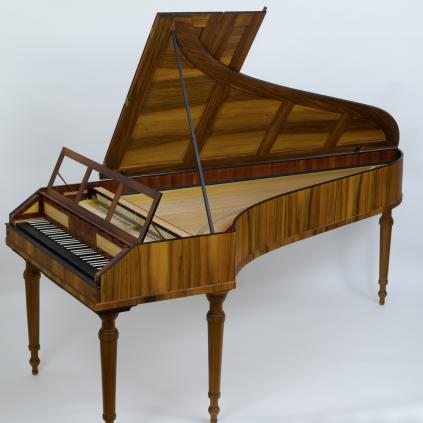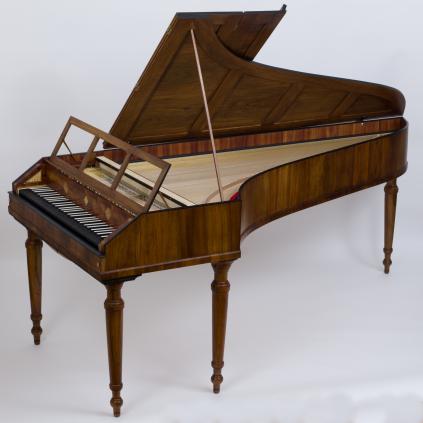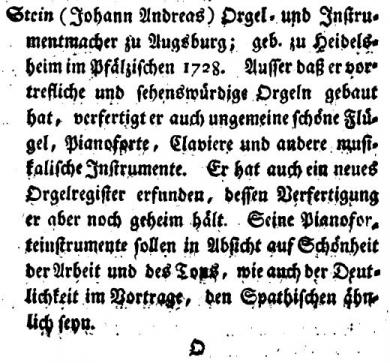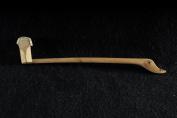Scientific reconstruction of an anonymous grand piano
School of J. A. Stein, c1780
Mechanism: Prellmechanism with escapement
Range: 5 octaves (F1-f3)
Pitch of our reconstructions
a1 = 415 Hz

replica 1:
L. van Beethoven
(1770-1827)
Sonata Nr. 17 op. 31, Nr, 2 d-moll
Varvara Manukyan (Interpretin)
Thomas Schwaiger (Musikproduktion)
Pitch: a1 = 415 Hz
Stimmung: Neidhardt - "Für die kleine Stadt"
Aus dem 1. Satz Largo/Allegro
Aus dem 2. Satz

replica 2:
L. van Beethoven (1770-1827)
Sonata Nr. 17, op. 31, Nr. 2 d-moll
Varvara Manukyan (Interpretin)
Thomas Schwaiger (Musikproduktion)
Pitch: a1 = 415 Hz
Stimmung: Neidhardt - "Für die kleine Stadt"
Aus dem 1. Satz Largo/Allegro
Aus dem 2. Satz
This instrument is part of the institute collection and was documented to a great extent. It is in original state in all its relevant parts and will be preserved unaltered as a remarkable piece of piano history. The instrument bears no signature, but closely resembles the typical construction of Johann Andreas Stein's grands, but there also are some significant details not present in Stein's instruments and therefore leading to the assumption of a maker familiar with Steins's work yet unidentified.
The reconstruction in comparison with the original work traces found in the original instrument revealed a very experienced and refined craftsmanship of this yet unidentified maker. Thus the instrument represents an early stage of dissemination of Stein's grand model so revolutionary for its age which was produced maybe by a former co-worker with close knowledge of Stein' instruments but individual manners and some technical ideas of his own.

"Musikalischer Almanach für Deutschland auf das Jahr 1782", Nikolaus Forkel.
Aus dem Kapitel: "Verzeichnis der besten Instrumentenmacher in Deutschland"

Aus dem Kapitel: "Verzeichnis der besten Instrumentenmacher in Deutschland"
Stein (Johann Andreas) Organ and instrument maker in Augsburg; born Heidelsheim in the Palatinate 1728. Not only he has built splendid and noteworthy organs, he also produced exquisitely beautiful grands, pianos, clavichords and othe musical instruments. He also invented a new organ stop, its design still kept a secret. His pianoforteinstrumente in regards of beauty of work and soundas well as accuracy of attack appear to be comparable to those by Spath.











